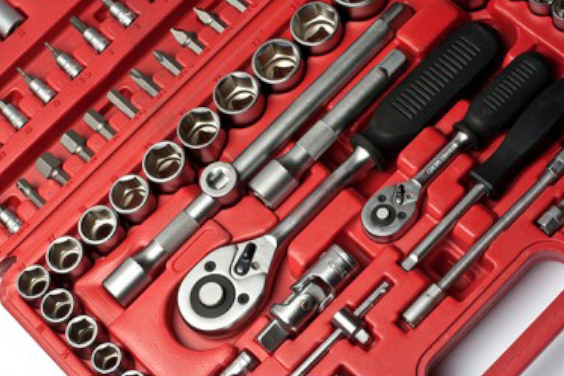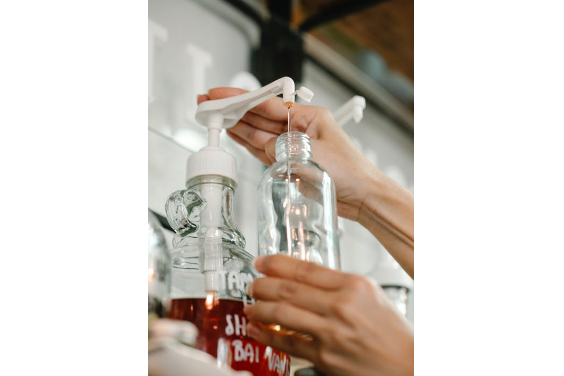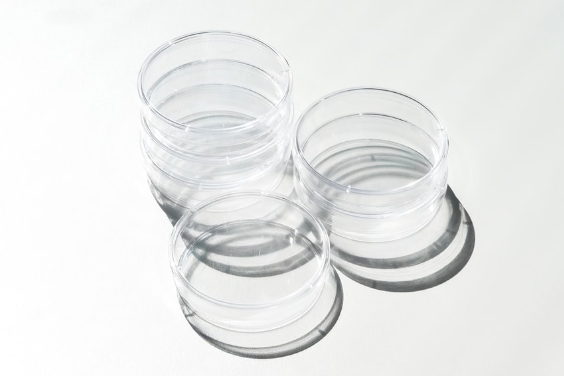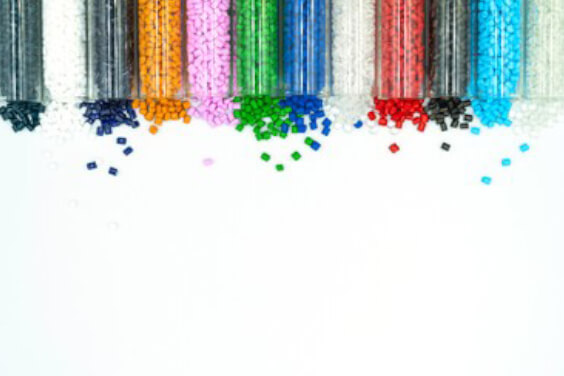
Insert Molding Process Step by Step
It is dangerous to make use of components after they’ve been manufactured without encasing them with plastic. It’s essential to encase these components to make
Share
Share
Injection molding temperature is critical for plastic injection molding; the proper injection molding temperature ensures product quality and manufacturing efficiency. As an injection mold manufacturer, we will demonstrate mold and melt temperature ranges for plastics and the optimal injection temperature ranges for various plastic materials. The aim here is to inform you of the temperature necessary in the melting and molding of plastic products. Do read on to find out more.
| Plastic Material Melt and Mould Temperatures | |
|---|---|
| MATERIAL | MELT TEMPERATURE RANGE (℃) |
| ABS - Acrylonitrile Butadiene Styrene | 190-270 |
| ABS/Polycarbonate ALLOY | 245-265 |
| ACETAL | 180-210 |
| ACRYLIC | 220-250 |
| CAB | 170-240 |
| HDPE | 210-270 |
| LDPE | 180-240 |
| NYLON 6 | 230-290 |
| NYLON 6 (30% GF) | 250-290 |
| NYLON 6/6 | 270-300 |
| NYLON 6/6 (33% GF) | 280-300 |
| NYLON 11 | 220-250 |
| NYLON 12 | 190-200 |
| PEEK | 350-390 |
| POLYCARBONATE | 280-320 |
| POLYESTER PBT | 240-275 |
| PET (SEMI-CRYSTALLINE) | 260-280 |
| PET (AMORPHOUS) | 260-280 |
| POLYPROPYLENE (COPOLYMER) | 200-280 |
| POLYPROPYLENE (HOMOPOLYMER) | 200-280 |
| POLYPROPYLENE (30% TALC-FILLED) | 240-290 |
| POLYPROPYLENE (30% GF) | 250-290 |
| POLYSTYRENE | 170-280 |
| POLYSTYRENE (30% GF) | 250-290 |
| PVC P | 170-190 |
| PVC U | 160-210 |
| SAN | 200-260 |
| SAN (30% GF) | 250-270 |
| TPE | 260-320 |
| Polymer Name | Minimum Temperature Value (°C) | Maximum Temperature (°C) |
|---|---|---|
| ABS - Acrylonitrile Butadiene Styrene | 86 | 89 |
| ABS Flame Retardant | 65 | 95 |
| ABS High Heat | 75 | 110 |
| ABS High Impact | 65 | 100 |
| ABS/PC Blend - Acrylonitrile Butadiene Styrene/Polycarbonate Blen | 70 | 110 |
| ABS/PC Blend 20% Glass Fiber | 70 | 110 |
| ABS/PC Flame Retardant | 70 | 110 |
| ASA - Acrylonitrile Styrene Acrylate | 90 | 110 |
| ASA/PC Flame Retardant | 90 | 110 |
| ASA/PVC Blend - Acrylonitrile Styrene Acrylate/Polyvinyl Chloride Blend | 80 | 90 |
| CA - Cellulose Acetate | 45 | 95 |
| CAB - Cellulose Acetate Butyrate | 60 | 105 |
| CP - Cellulose Propionate | 60 | 105 |
| CPVC - Chlorinated Polyvinyl Chloride | 80 | 100 |
| ECTFE - Ethylene Chlorotrifluoroethylene | 140 | 150 |
| ETFE - Ethylene Tetrafluoroethylene | 140 | 155 |
| EVA - Ethylene Vinyl Acetate | 45 | 70 |
| EVOH - Ethylene Vinyl Alcohol | 80 | 100 |
| FEP - Fluorinated Ethylene Propylene | 205 | 205 |
| HDPE - High-Density Polyethylene | 100 | 120 |
| HIPS - High Impact Polystyrene | 60 | 80 |
| HIPS Flame Retardant V0 | 60 | 80 |
| Ionomer (Ethylene-Methyl Acrylate Copolymer) | 34 | 48 |
| LCP - Liquid Crystal Polymer | 200 | 240 |
| LCP Carbon Fiber-reinforced | 200 | 240 |
| LCP Glass Fiber-reinforced | 200 | 240 |
| LCP Mineral-filled | 200 | 240 |
| LDPE - Low-Density Polyethylene | 80 | 100 |
| LLDPE - Linear Low-Density Polyethylene | 90 | 110 |
| MABS - Transparent Acrylonitrile Butadiene Styrene | 75 | 80 |
| PA 46 - Polyamide 46 | 110 | 150 |
| PA 46, 30% Glass Fiber | 130 | 160 |
| PA 6 - Polyamide 6 | 80 | 120 |
| PA 6-10 - Polyamide 6-10 | 80 | 150 |
| PA 66 - Polyamide 6-6 | 80 | 140 |
| PA 66, 30% Glass Fiber | 100 | 150 |
| PA 66, 30% Mineral filled | 120 | 140 |
| PA 66, Impact Modified, 15-30% Glass Fiber | 110 | 140 |
| PA 66, Impact Modified | 80 | 130 |
| Polyamide semi-aromatic | 88 | 135 |
| PAI - Polyamide-Imide | 220 | 280 |
| PAI, 30% Glass Fiber | 220 | 220 |
| PAI, Low Friction | 220 | 220 |
| PAR - Polyarylate | 130 | 130 |
| PBT - Polybutylene Terephthalate | 80 | 140 |
| PBT, 30% Glass Fiber | 80 | 140 |
| PC (Polycarbonate) 20-40% Glass Fiber | 90 | 125 |
| PC (Polycarbonate) 20-40% Glass Fiber Flame Retardant | 90 | 125 |
| PC - Polycarbonate, high heat | 100 | 140 |
| PC/PBT Blend - Polycarbonate/Polybutylene Terephthalate Blend | 60 | 121 |
| PC/PBT blend, Glass Filled | 121 | 193 |
| PCL - Polycaprolactone | 45 | 45 |
| PCTFE - Polymonochlorotrifluoroethylene | 150 | 175 |
| PE - Polyethylene 30% Glass Fiber | 100 | 130 |
| PEEK - Polyetheretherketone | 154 | 260 |
| PEEK 30% Carbon Fiber-reinforced | - | 240 |
| PEEK 30% Glass Fiber-reinforced | - | 240 |
| PEI - Polyetherimide | 170 | 170 |
| PEI, 30% Glass Fiber-reinforced | 170 | 170 |
| PEI, Mineral Filled | 170 | 170 |
| PPESU - Polyethersulfone | 175 | 180 |
| PESU 10-30% glass fiber | 180 | 180 |
| PET - Polyethylene Terephthalate | 80 | 140 |
| PET, 30% Glass Fiber-reinforced | 100 | 140 |
| PET, 30/35% Glass Fiber-reinforced, Impact Modified | 80 | 140 |
| PETG - Polyethylene Terephthalate Glycol | 63 | 63 |
| PFA - Perfluoroalkoxy | 240 | 260 |
| PHB - V (5% valerate) | 95 | 95 |
| PI - Polyimide | 260 | 360 |
| PMMA - Polymethylmethacrylate/Acrylic | 70 | 90 |
| PMMA (Acrylic) High Heat | 100 | 150 |
| PMMA (Acrylic) Impact Modified | 70 | 90 |
| PMP - Polymethylpentene | 90 | 110 |
| PMP 30% Glass Fiber-reinforced | 90 | 110 |
| PMP Mineral Filled | 90 | 110 |
| POM - Polyoxymethylene (Acetal) | 80 | 105 |
| POM (Acetal) Impact Modified | 80 | 100 |
| POM (Acetal) Low Friction | 80 | 105 |
| POM (Acetal) Mineral Filled | 80 | 105 |
| PP - Polypropylene 10-20% Glass Fiber | 100 | 130 |
| PP, 10-40% Mineral Filled | 100 | 130 |
| PP, 10-40% Talc Filled | 100 | 130 |
| PP, 30-40% Glass Fiber-reinforced | 100 | 130 |
| PP (Polypropylene) Copolymer | 100 | 130 |
| PP (Polypropylene) Homopolymer | 100 | 130 |
| PP, Impact Modified | 100 | 130 |
| PPA - Polyphthalamide | 140 | 140 |
| PPA, 30% mineral-filled | 154 | 156 |
| PPA, 33% Glass Fiber-reinforced | 184 | 186 |
| PPA, 45% Glass Fiber-reinforced | 184 | 186 |
| PPE - Polyphenylene Ether | 80 | 110 |
| PPE, 30% Glass Fiber-reinforced | 80 | 110 |
| PPE, Flame Retardant | 80 | 110 |
| PPE, Impact Modified | 80 | 110 |
| PPE, Mineral Filled | 80 | 110 |
| PPS - Polyphenylene Sulfide | 200 | 220 |
| PPS, 20-30% Glass Fiber-reinforced | 200 | 220 |
| PPS, 40% Glass Fiber-reinforced | 200 | 220 |
| PPS, Conductive | 200 | 220 |
| PPS, Glass fiber & Mineral-filled | 200 | 220 |
| PPSU - Polyphenylene Sulfone | 149 | 210 |
| PS (Polystyrene) 30% glass fiber | 75 | 122 |
| PS (Polystyrene) Crystal | 65 | 80 |
| PS, High Heat | 75 | 90 |
| PSU - Polysulfone | 150 | 180 |
| PSU, 30% Glass finer-reinforced | 150 | 180 |
| PSU Mineral Filled | 150 | 150 |
| PTFE - Polytetrafluoroethylene | 260 | 290 |
| PTFE, 25% Glass Fiber-reinforced | 260 | 260 |
| PVC (Polyvinyl Chloride), 20% Glass Fiber-reinforced | 50 | 80 |
| PVC, Plasticized | 50 | 80 |
| PVC, Plasticized Filled | 50 | 80 |
| PVC Rigid | 50 | 80 |
| PVDC - Polyvinylidene Chloride | 70 | 90 |
| PVDF - Polyvinylidene Fluoride | 70 | 150 |
| SAN - Styrene Acrylonitrile | 65 | 95 |
| SAN, 20% Glass Fiber-reinforced | 65 | 95 |
| SMA - Styrene Maleic Anhydride | 75 | 100 |
| SMA, 20% Glass Fiber-reinforced | 75 | 100 |
| SMA, Flame Retardant V0 | 75 | 100 |
| SMMA - Styrene Methyl Methacrylate | 94 | 100 |
| UHMWPE - Ultra High Molecular Weight Polyethylene | 110 | 130 |
| XLPE - Crosslinked Polyethylene | 67 | 82 |
The above temperature values are inclusive of the melting points of plastics and other polymers. The second table details the recommended temperature ranges for plastic molding, that will ensure you get the best output out of your molding process. For molding services, we do recommend you contact a plastic injection molding OEM that will offer the best ROI.

It is dangerous to make use of components after they’ve been manufactured without encasing them with plastic. It’s essential to encase these components to make

Transparent plastic is being used in virtually every industry and this is because of its capacity to allow you see through and its ease of

Plastic is a common material used in the production of objects that can be used in homes, the automobile industry, and virtually all sectors. It

Basically, there are two kinds of plastics – thermoplastic, and thermosets. But the majorly talked about kind is the thermoplastic because of its versatile and
+86-755-8524 1121
marketing@rydtooling.com
No. 2, HongKan 1st Road, YanChuan Community, YanLuo Street, BaoAn District, ShenZhen City, China. Post Code 518105.
Subscribe to our newsletter to get manufacturing news and updates!
